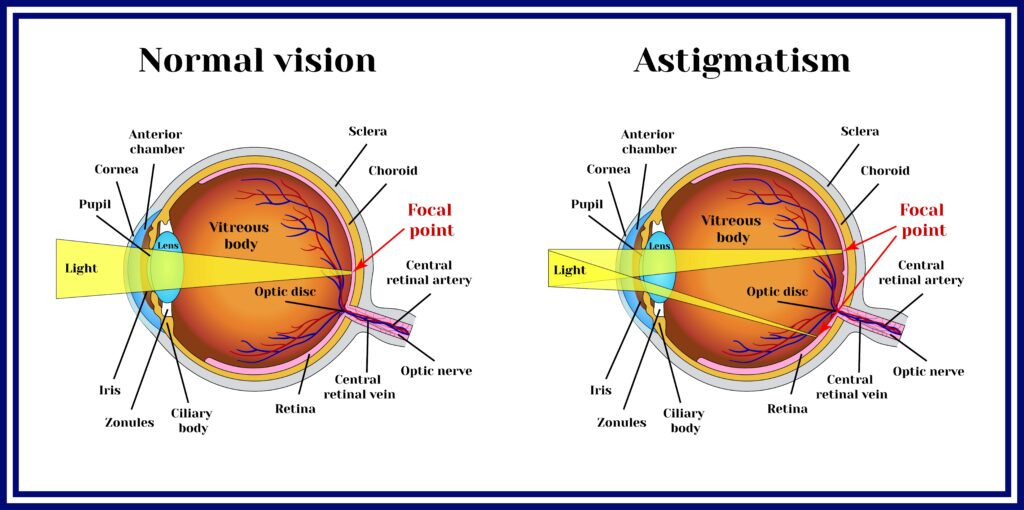Astigmatism is a common vision condition — in fact, the American Academy of Ophthalmology estimates it may impact as many as one in three people in the United States. Caused by the irregular curving of the eye’s cornea or lens, astigmatism produces blurry vision and other ocular problems. So, how does astigmatism affect vision? Read on to find out about its symptoms, causes, and treatments.

Is Astigmatism Affecting Your Vision?
If you have astigmatism, you may experience the following symptoms:
- Blurred vision: With astigmatism, objects at any distance can appear blurry, fuzzy, or distorted. You might experience difficulty seeing fine details. Objects or images may also appear stretched-out or wavy.
- Eyestrain and irritation: People with astigmatism frequently report discomfort or fatigue in the eyes. You may also experience headaches, especially after tasks that require visual concentration, like reading or driving.
- Reduced night vision: Astigmatism often makes it difficult to see clearly at night. You might notice extra blurriness or problems with depth perception, especially when driving at night.
If you experience these symptoms, be sure to reach out to your eye doctor. An optometrist or ophthalmologist can accurately diagnose astigmatism and help you move forward with a treatment plan.
How Astigmatism Affects the Eye
So, how does astigmatism affect vision? Astigmatism is known as a refractive error, meaning the eye’s unique shape prevents light from focusing accurately on the retina.
It works like this: The human eye has two structures that bend, or refract, light onto the retina. The first structure is the cornea, which is the front surface of the eye; the second structure is the lens, which is inside the eye. Ideally, the cornea and the lens would both have a perfectly round curvature. However, as many as one in three people have mismatched curves in the eye. That means each surface processes light rays slightly differently, creating overlapping images and blurred vision.
Treating Astigmatism
Astigmatism is incredibly common, and there are various potential treatments. The most common treatments are eyeglasses or contact lenses specifically formulated for people with astigmatism.
_____
Astigmatism is a refractive error, meaning that it affects vision by warping the way light bends onto the eye. Fortunately, there are a wide variety of treatments for this common condition. If you notice symptoms like blurred vision, headaches, and reduced night vision, reach out to an eye doctor to see if astigmatism treatment is right for you.
If you live near southwest Missouri, contact Heffington’s. Since 1975, the Heffington family has been assisting the Springfield community with top-quality eye care and affordable eyeglasses and contacts. One of the unique features of our family-owned business is that we manufacture lenses at our own laboratory, giving us total control over the service and pricing, and we’re happy to pass our savings on to you. To learn more about our products and services, please get in touch with us online, send an email to asktheexperts@heffingtons.com, or give us a call at 417-869-3937 (Optiland location) or 417-882-3937 (House of Vision location). We look forward to hearing from you!
